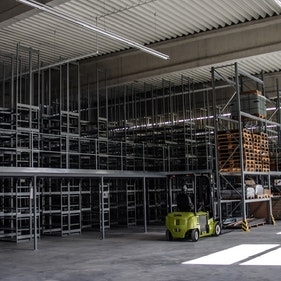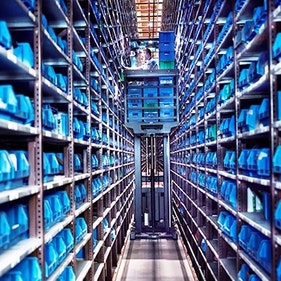This article was first published on March 30, 2020.
The disease caused by the novel coronavirus, COVID-19, continues to spread around the world, impacting businesses that must address new information rapidly. As the circumstances continue to unfold, long-term business resiliency is top of mind for all. With macroeconomic indicators suggesting that recession is just around the corner, we expect this time around the downturn will almost certainly be very different from those experienced in recent decades. The manufacturing industry, in particular, will face unique challenges, as new technologies and changing customer behaviors will likely reshape underlying demand. It is essential to make solid preparation for these changes, looking beyond the immediate task of weathering the coming storm to plan for the recovery. Strategic Sales and Operations Planning provides the perfect process for just this task.
Strategic Sales and Operations planning, known as S&OP, can make a big difference in managing recession. While many organizations are using S&OP as a tactical tool, few have yet realized the benefits of its full strategic potential. For companies already well versed in S&OP, this is a critical next step. For those that have yet to embrace S&OP fully, recession provides a strong case for doing so.
In this article, we present part one of a two-part discussion where we focus on the resurgence on the importance of S&OP as a strategic lever. In part two, we offer key levers companies can employ to make an immediate impact.
Why This Recession Will Be Very Different From The Last One
This recession is likely to pose new challenges for many. One major contrast to past recessions is that it is almost inevitable that the coming decline in demand will accelerate the pace of the structural transformation in several sectors. The impact of this shift will be all the greater because shrinking demand will concentrate investment into areas of strategic priority. For example, in the automotive industry, the desire to protect investment in e-mobility could well lead to cuts in capital expenditure on conventional combustion engine manufacture. This shift will have significant implications for everyone in the supply chain.
These challenges could be exacerbated by potential rises in tariffs and increased trade barriers. In contrast to past recessions, tariffs are more likely to go up than down during the current downturn. For those reliant on exports, any increase in duties will further disrupt global supply chains and complicate sales.
In contrast to the 2007-08 financial crisis, there is now little room for interest rates to drop further than they already have. Only the agile will survive. The time to act is now.
Sales And Operations Planning Is About Much More Than Tactical Moves
Sales and Operations Planning is a powerful process designed to synchronize demand, capacity, and inventory. S&OP is used tactically to ensure costs and inventories are optimized at the weekly, monthly, or quarterly level. As such, it forms the backbone of many a company’s day-to-day operations, acting as an essential contributor to sales efficiency while simultaneously improving service levels.
A second facet of S&OP comes into play when planning for recession – its role as a strategic tool. Recessions are defined by high levels of uncertainty as well as declining demand. Both of these factors serve to undermine productive efficiency. S&OP, when used strategically, can help organizations manage this uncertainty and increase efficiency.
Strategic S&OP does this in two ways. The first way is to enable the organization to adjust its capacity in light of the declining but uncertain patterns of demand. The task is to achieve this objective without overly weakening and ultimately undermining the asset base, thereby enabling rapid ramp-up as soon as the recession is over.
The second way strategic S&OP makes a real difference to recession planning is in acting as a trigger for the re-evaluation of the current set-up of the supply chain.
Running The Strategic And Tactical In Tandem
The use of S&OP as a strategic tool in no way displaces its more tactical use. In the circumstances of recession, S&OP’s tactical use is focused on maximizing asset utilization while minimizing rescheduling and stock-outs. This includes making adjustments to shifts, interventions that range from short-time working all the way to mothballing sites and assets.
The conditions of recession also encourage more tactical innovations, such as collaborating with other manufacturers or suppliers to increase asset utilization. The overall objective of all such moves is to reduce the cost base and free up cash.
In contrast to these short-term, tactical moves, the focus of strategic S&OP during a recession is on the medium-term objectives of the business, with a horizon of three years typically. The focus includes planning for the capabilities, production capacity, and assets that will be required to meet the projected demand once the recession is over.
This exercise acts as a trigger for re-examining the supply chain, including the potential introduction of new elements and in-depth review of the value chain and product offerings. This is also the opportunity to re-evaluate the operating model itself in the light of contracting demand. What is it essential to keep in-house, or bring back in-house, and what would be better outsourced?
As well as ensuring the optimal allocation of product manufacture based on fully landed cost, a full strategic S&OP review might also result in decisions to implement greater specialization in productive capacity, for instance, or to form new strategic partnerships.
In one example, when a leading European spare parts manufacturer lost almost half of its order book value in the latest crisis, the management reacted quickly. Within a few weeks, it immediately introduced near-term measures, such as short-time work and adjustments to the shift pattern. These interventions helped ease the immediate crisis. Looking beyond the short-term impact, the S&OP team then set out to ensure the firm was well prepared to survive the coming years, which are likely to be rough. It is now able not only to identify the least efficient assets in its network, enabling a staged ramp-down of several facilities but has also increased its activities with strategic partners to keep its logistics costs under control. These actions, in combination with ongoing monitoring of the economy, place it in the position to ensure that eventual ramp-up is likely to generate more profitability than that of its competitors – providing an advantage in the market.
Companies Need To Act Immediately Before The Recession Bites Deeper
What do you need to do now? The short answer is that you need to ensure you have the necessary strategic S&OP capabilities in place before the recession bites even deeper. Once it does, most businesses will not have sufficient capacity and bandwidth to deal with the critical medium-term issues.
Strategic S&OP requires a different set of capabilities to those used on a day-to-day basis (see Exhibit 1). For convenience, these capabilities can be grouped into four areas.
Go Into The Downturn Fully Equipped With An Array Of Short-Term Levers
Once the enterprise is equipped with strategic S&OP capabilities, it can develop scenarios for how the recession will pan out. The scenarios act as the basis for planning, each of them providing estimates of the impact of the recession on the value chain in terms of parameters such as the production and procurement for each business. The scenarios can also be used to assess regional differences.
Once the various scenarios have been analyzed, the next task is to identify the toolkit of short-term levers that will be used to respond to the recession. Each of the potential levers should be evaluated and prioritized in terms of their likely impact on the current organization, as well as in terms of whether or not they can be implemented immediately. The most aggressive will be the hardest to reverse when the economy recovers. Those based on fully landed cost are likely to be the most robust.
The following list of question can help to identify which of the various short-term levers are best suited to tackling declining demand while simultaneously supporting the organization’s longer-term strategy:
- How easy (or difficult) will it be to implement the short-term lever in each of the various scenarios?
- How long will it take the lever to be brought into action, and how much longer will it be before it is expected to have an impact?
- How many people, functions, and processes are involved in its implementation? How fast can the changes be set in place?
- Which functions, areas, and products are going to be most affected by its implementation, and which are less affected or are not affected at all?
Running through each of the scenarios several times will not only provide the leadership with the confidence that they are fully prepared for managing the downturn but will also help to increase the enterprise’s flexibility during the recession.
In part two of this article, our co-authors talk about short term levers companies can consider in order to make an immediate impact.
Shaping Up
The great benefit of strategic S&OP is that it enables the organization to develop insights into the strengths and weaknesses of its current set up. This information is vital for managing during a recession. In particular, it equips the enterprise with an array of short-term levers to ensure it is better placed to respond quickly to shifts in demand during a prolonged downturn. This provides the flexibility to counter the impact of any macroeconomic changes and to get ahead of the game once recovery is underway.
It is in looking beyond the immediate impact of the recession, to focus on building capacities in the medium term, that strategic S&OP really comes into its own. Strategic S&OP is unique in this aspect, in ensuring that the enterprise is adequately equipped when ramping up out of recession, placing the enterprise in an even stronger position than when it entered it.






